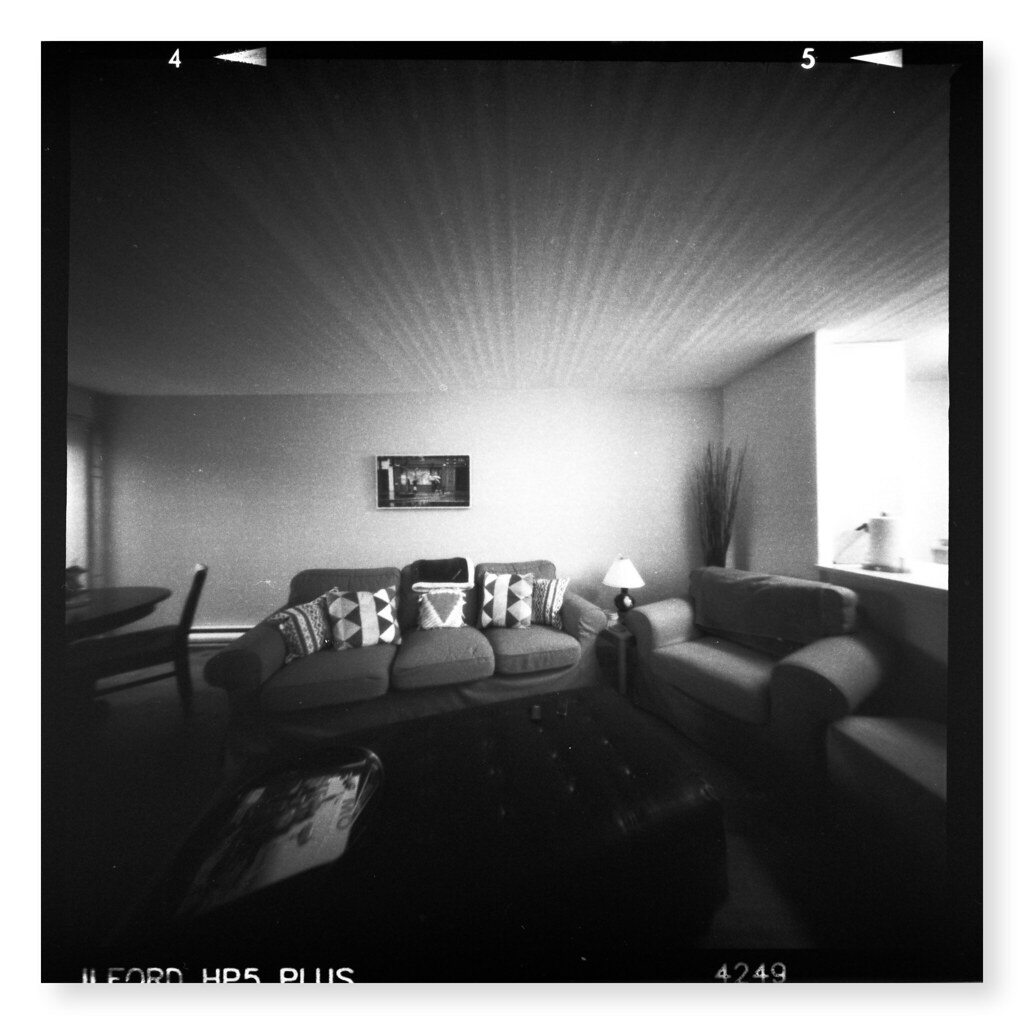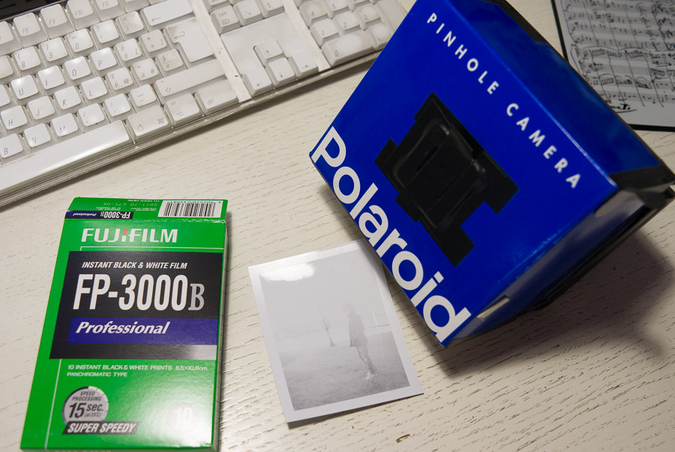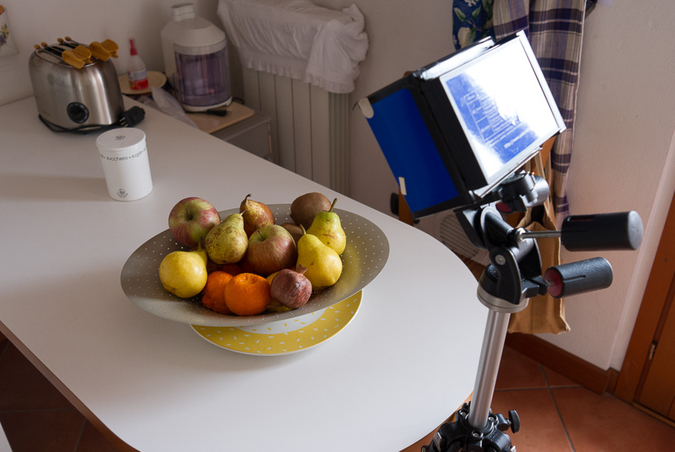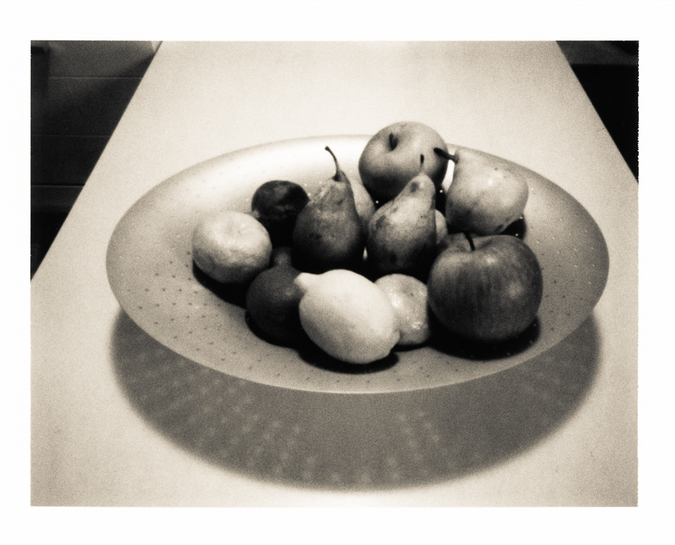ayalara72
Newbie
I am interested in pinhole photography and there are different pinhole cameras such as Ondu, Reality So Subtle, Zero Image and many others. I was wondering which one is a good camera to start?
raydm6
Yay! Cameras! 🙈🙉🙊┌( ಠ_ಠ)┘ [◉"]
The 120 Zero's are pretty cool if you like to dev 120 B&W film yourself. Pinhole body caps might be the least costly if you aren't into DIY Pinhole cameras.
I got started in Pinhole in the 90's and went a little crazy:
I got started in Pinhole in the 90's and went a little crazy:
- Pinhole body cap for Leica M
- Zero 120
- Robert Rigby 4x5 (used Polaroid 545i film holder)
- Kevin Finney 4x5 with 4-Pinhole/3-Zone Plate Turret (same holder)
narsuitus
Well-known
I shoot with a variety of pinhole cameras.
In my opinion, a good starter pinhole is one you build yourself. The best ones I have built use 4x5 inch sheet film. The worst ones I built, use 35mm roll film.
Two medium format roll film pinhole cameras that I have purchased are the Zero Image and the Holga.
Both come with mask that allow me to change the image aspect ratio from 645, 6x6, 6x7, 6x9, to 6x12. I only use my mine to shoot 6x9cm.
The Holga is made of plastic. The Zero is made of wood.
The Holga has a .3mm pinhole size and a 51mm pinhole-to-film plane distance.
The Zero has an .18mm pinhole size and a 40mm pinhole-to-film plane distance.
Both have tripod sockets.
The Zero cost twice as much as the Holga.
Both make a good starter pinhole camera.

120 Pinhole Cameras by Narsuitus, on Flickr
In my opinion, a good starter pinhole is one you build yourself. The best ones I have built use 4x5 inch sheet film. The worst ones I built, use 35mm roll film.
Two medium format roll film pinhole cameras that I have purchased are the Zero Image and the Holga.
Both come with mask that allow me to change the image aspect ratio from 645, 6x6, 6x7, 6x9, to 6x12. I only use my mine to shoot 6x9cm.
The Holga is made of plastic. The Zero is made of wood.
The Holga has a .3mm pinhole size and a 51mm pinhole-to-film plane distance.
The Zero has an .18mm pinhole size and a 40mm pinhole-to-film plane distance.
Both have tripod sockets.
The Zero cost twice as much as the Holga.
Both make a good starter pinhole camera.

120 Pinhole Cameras by Narsuitus, on Flickr
narsuitus
Well-known
If you already have a digital or film camera, you can put a pinhole into a body cap or you can buy a body cap with a pinhole already installed.

Pinhole Camera by Narsuitus, on Flickr

Pinhole Camera by Narsuitus, on Flickr
ayalara72
Newbie
Thanks everybody for the responds. I am leaning towards 120 pinhole camera using BW film.
Godfrey
somewhat colored
Thanks everybody for the responds. I am leaning towards 120 pinhole camera using BW film.
My experience is that, generally speaking, the larger the format the better your results with pinhole photography. At least in terms of subject detailing.
I have a RealitySoSubtle 6x6 camera, Skink Pinhole lenses for FourThirds SLR and Leica M mount, and a 66/6 Instant Pinhole camera that takes Polaroid SX-70/600 type film. All of them have their charm.

Memorial Corner - Japan Town, San Jose 2020
66/6 Instant Pinhole

Dawn Street Lamp - Mountain View 2013
Skink FourThirds Pinhole on Olympus E-PL1

Couch & Lamp - Santa Clara 2020
ReallySoSubtle 6x6
My advice is to just get any pinhole setup to start with and play with it. Starting with a pinhole on a digital camera allows you to experiment a lot at low cost, at first, to get a feel for what you might want to do with this particular imaging notion. Getting a dedicated pinhole camera like the ReallySoSubtle 6x6 or others will then make more sense so you can take what you've learned and go further with it.
G
agfa100
Well-known
For film I have a zero and for digital I use a Skink in m mount that I use on my A7s. I also recommend going with Digital first as you get instant feedback and it's cheaper in the long run. But whatever you do have fun.
mh2000
Well-known
Around 20 years ago, I wrote up a little page on pinhole concepts. Even though I no longer control the content, I still get emails from photography teachers who use my page in their courses. Maybe you'd find it useful...
http://www.oocities.org/markhahn2000/
http://www.oocities.org/markhahn2000/
charjohncarter
Mentor
My experience is that, generally speaking, the larger the format the better your results with pinhole photography. At least in terms of subject detailing.
I have a RealitySoSubtle 6x6 camera, Skink Pinhole lenses for FourThirds SLR and Leica M mount, and a 66/6 Instant Pinhole camera that takes Polaroid SX-70/600 type film. All of them have their charm.
Memorial Corner - Japan Town, San Jose 2020
66/6 Instant Pinhole
Dawn Street Lamp - Mountain View 2013
Skink FourThirds Pinhole on Olympus E-PL1
Couch & Lamp - Santa Clara 2020
ReallySoSubtle 6x6
My advice is to just get any pinhole setup to start with and play with it. Starting with a pinhole on a digital camera allows you to experiment a lot at low cost, at first, to get a feel for what you might want to do with this particular imaging notion. Getting a dedicated pinhole camera like the ReallySoSubtle 6x6 or others will then make more sense so you can take what you've learned and go further with it.
G
Those are great Godfrey. I also agree the larger the format the better the results. I made a pinhole cap for my Pentax 6x7 and a pinhole from Lenox Laser: https://lenoxlaser.com/shop/optical-apertures/standard-apertures/standard-aperture/
I also went crazy like someone above and made a pack camera pinhole Polaroid:
 DIY pinhole by John Carter, on Flickr
DIY pinhole by John Carter, on Flickr Polaroid Pinhole by John Carter, on Flickr
Polaroid Pinhole by John Carter, on FlickrRayt
Nonplayer Character
Rayt
Nonplayer Character
zuiko85
Mentor
If you can cobble together a darkroom, doesn’t have to be fancy, then use photo paper as a negative and either contact print for a print or scan and invert for output to a printer. Initially the investment might be $250 to $350 or so, but after that continuing material cost is low.
DanskDynamit
Well-known
I have tried a few and the best was the Holga 120WPC. I have hacked the shutter to just use the cap and it works great.
I have also made some in different formats (35mm, 120, photographic paper). Making it yourself is very rewarding
I have also made some in different formats (35mm, 120, photographic paper). Making it yourself is very rewarding
Puggie
Established
If you can cobble together a darkroom, doesn’t have to be fancy, then use photo paper as a negative and either contact print for a print or scan and invert for output to a printer. Initially the investment might be $250 to $350 or so, but after that continuing material cost is low.
Harman do the direct positive photo paper too if you take this route.
Bill
robert blu
quiet photographer
I am a proud owner of a Polaroid Cardboard Pinhole Camera, to be used with packfilms



Unfotunatley no more packfilm but I still have a few packs
but I still have a few packs 
@ Godfrey: Strangely because I follow "supersense.com" I never heard about the 66/6 ! Strong idea !



Unfotunatley no more packfilm
@ Godfrey: Strangely because I follow "supersense.com" I never heard about the 66/6 ! Strong idea !
zuiko85
Mentor
Harman do the direct positive photo paper too if you take this route.
Bill
Direct positive is fiber based only so extended wash times and, you wind up with a mirror image. Perhaps it’s just my own mental issues but that bugs me. Plus, I’d rather have a negative that can be reprinted if it needs to have correction.
Muggins
Junk magnet
mh2000
Well-known
Rayt, I like the old trucks! perfect pinhole subjects! 
mh2000
Well-known
If you can cobble together a darkroom, doesn’t have to be fancy, then use photo paper as a negative and either contact print for a print or scan and invert for output to a printer. Initially the investment might be $250 to $350 or so, but after that continuing material cost is low.
If you are just looking for contact prints, a $0.99 picture frame, a used safe light, and a few developing trays are all you need! Put a dim light in your bathroom, count out seconds while flipping it on to make a test strip and then go!
Phil_F_NM
Camera hacker
Why are so many duplicate posts coming up lately?
Phil Forrest
Phil Forrest
Share:
-
This site uses cookies to help personalise content, tailor your experience and to keep you logged in if you register.
By continuing to use this site, you are consenting to our use of cookies.




